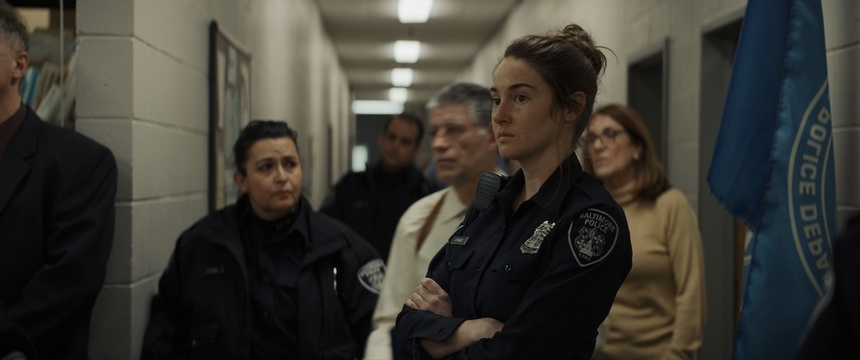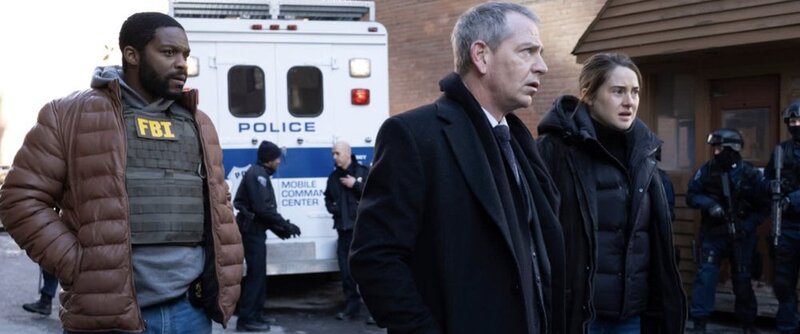TO CATCH A KILLER Review: Trying to Be A Different Kind of Police Procedural

'On the hunt for a killer' stories have been a mainstay of cinema for decades. Often able to be done on a mid-level budget, with a heft chunk sometimes spent on some star power, they elaboarte on the kind of mystery story that captures a large audience and let us see the inner workings of policing, detecting, and whatever particular profession/way of life is being examined. Perhaps a good question to ask right now is, what kind of place do these stories have now? Especially as we are more aware of how deeply and broadly police departments and similar authorities (FBI, CIA) are corrupt, how much can we appreciate a film that puts hero cops at the centre? And when the killer is a mass murderer, and the majority of those are cisgendered white men with a history of domestic violence and more often than more often than not racist/homopobic/misogynist/take your pick?
Not that we go to the movies for reality every time; we like the fantasies even if they have a lot of components of reality. Should we burden every film set in out real world, with being realistic and accurate in every detail? That would hardly make for good drama. And yet, I found myself asking these questions often while watching the latest in detective mysteries, To Catch A Killer. This is directed and co-written by Damián Szifron, whose inventive and darkly funny film Wild Tales was a sleeper hit in 2014. And it stars Ben Mendelsohn (who could make the phone book sound interesting) and Shailene Woodley (who already has a solid career). So the talent in front of and behind the camera is without question.
So what can this film do, that might bring something new to the proverbial table of films about mass/serial killers? Having a woman cop as the fresh perspective and real brains behind the detecting is unusual but not unheard of (see Murder by Numbers, Taking Lives), and having police departments at each other's throats and corruption exposed on various political levels is hardly news. But mass killings are now a weekly occurance in the USA; too many police departments are more corrupt than not, and the real-life profile of mass shooters is nearly always identical. Is it possible to make a compelling film that sticks close enough to a tried-and-true formula while still not overly indulging in stereotypes that no longer make sense?
Eleanor Falco (Woodley) is a Baltimore beat cop; somehow managing to join the police force without a college degree, she's sent to settle a 'dispute' in a diner on New Year's Eve. Suddenly, in high rise buildings in a few blocks of downtown, nearly 30 people are killed by a sharpshooter, who is able to cover his tracks. FBI agent Lammark (Mendelsohn) is put on the case that the city, obviously, wants solved quickly. But quick can often mean sloppy. Lammark notices Falco's talent when she makes an off-hand yet astute observation and gets her on his team, noting that city officials will use any excuse to get him off the case. Falco and Lammark's investigation brings false leads, more death, and excuses as the image of what the cops are doing to stop the killer seems more important to officials than actually solving the case.
On the one hand, this is a good detective procedural: we get to have the rookie cop with the seasoned pro, each using their talents to assist the other. They follow the interesting clues, they fight against bureaucrats who don't understand the work that needs to go into catching someone much smarter than all of them. It incorporates more contemporary problems such as social media, CCTV footage limitations, stereotypes about people of certain ethnicities and those with mental health problems, and maybe most importantly, how sheer number of guns in the USA and how impossible it can be to trace them. Mendelsohn and Woodley are both good performers, never giving less than their best, and their characters are at least somewhat atypical. They make a good pairing. And when they do find the killer, he gets some decent screentime, and again, is somewhat a-typical as a mass killer. The cinematography, sound design, all work well for what is intended (though the frequent use of upside drone shots feels like it's just trying to look cool when the angle makes little sense for the story).
But this is both good and bad, as it reinforced a particular stereotype of the lone gunman who has no other agenda beyond himself. As we know, the truth is quite the opposite. And that motivation is quite weak, one that actually makes no sense for someone with his psychological profile to become a mass killer. And while the story is entertaining enough, it's still fairly paint-by-numbers, with only the occasional splotch going outside the lines. And is that enough to carry it for almost two hours? The moments when it does get more interesting, when it tries to be a deeper character study - well, they start out making sense: two very damaged people discussing what it means to be violent ot ourselves, and violent to others. But each of their natures don't explain what one of them does.
To Catch a Killer feels like a film you might turn on in the evening when you're not sure exactly what you want to watch, and you're likely be entertained enough with a decent mystery and good actors, and at least the story is trying to be something a bit different. But there are too many inconsistencies in how it perceives its villain, too many typical traps it falls into, to set itself apart.







